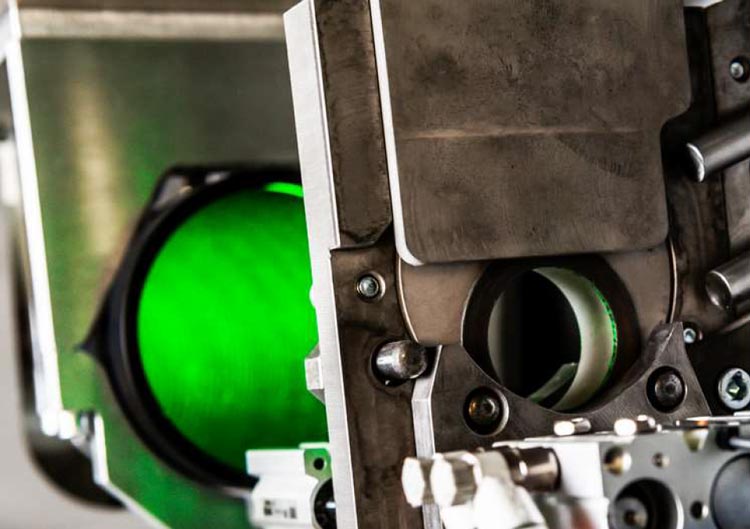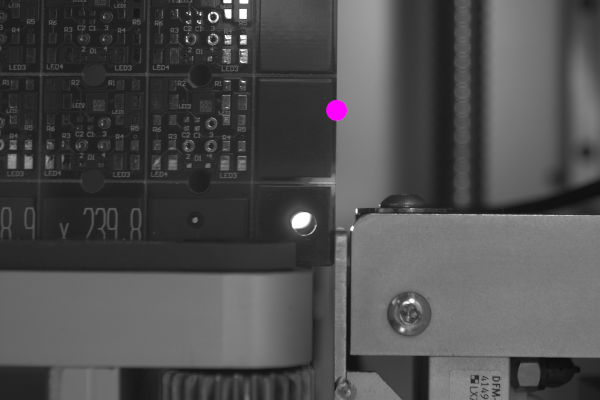Zebra Aurora Vision Software Success Stories
Zebra Technologies stands at the forefront of computer vision software. The
Aurora Vision software empowers users to effortlessly build their own image processing programs for automation projects. Users such as computer vision integrators find a swift and seamless path to solving automation challenges. This image processing software of Aurora Vision creates a robust graphical environment for machine vision engineers, giving them the tools for applications such as quality inspection and industrial automation.
Aurora Vision software is based on a dataflow-based approach, including a variety of pre-built image analysis filters. Tailor-made for professionals, it simplifies the creation of common applications and streamlines the development of customized projects. This adaptability makes it a go-to tool for computer vision engineers addressing diverse quality inspection and automation needs in the industrial sector.
This Zebra Aurora software webpage showcases a range of computer vision software packages for image processing including:
- Aurora Vision Studio: A powerhouse of simplicity, offering a graphical low-level programming environment for quick development and easy customization by machine vision engineers.
- Aurora Vision Library: Ready-to-use features for C++ and .NET programming, giving you the freedom to develop your own software for even the most complex applications.
- Aurora Vision Deep Learning: This Aurora Vision software add-on allows you to select images, mark defects/labels, and train the software for your specific application. Dive deep into optical character recognition with the pre-trained Deep Learning OCR tool. This tool is perfect for deciphering complicated, damaged, or blurred characters. It's the ultimate solution for overcoming visual challenges in character recognition.
Airport trays verification
The Aurora Vision software by Zebra Technologies includes advanced deep learning capabilities, allowing users to create customized algorithms tailored to their specific needs. One notable example of this flexibility is a project carried out by the Technical University of Vienna, specifically the Institute for Production Engineering and Photonic Technologies. The development at the Institute was led by a team of experts, Dipl.-Ing. Fabian Singer and Dipl.-Ing. Laurenz Pickel, who specialize in providing bespoke machine vision solutions. In this project, the team developed a dual-function system that combines both 2D image analysis using deep learning and 3D measurement using classical machine learning algorithms.
Deep Learning-Based 2D-Image Classification
The first component of the system is a
deep learning model, designed to analyze images of airport security trays and classify them into one of three categories:
• Empty trays
• Trays with objects left behind
• Trays requiring attention due to liquid spills
This algorithm was trained on a dataset of 350 images, ensuring accurate detection and classification to improve airport security measures. The deep learning approach enables the system to provide real-time feedback and detailed visualizations, such as heatmaps, that guide security personnel in identifying issues swiftly.


3D Measurement with Classical Machine Learning
The second component of the system focuses on 3D analysis. Unlike the 2D image classification, this part of the system uses classical machine learning algorithms to perform precise measurements of the tray and its contents:
• Measures the entire tray volume
• Calculates the volumes of the objects inside the tray
• Determines the total volume of the tray’s contents
• Identifies the maximum fill height
This volumetric analysis provides a comprehensive overview of the tray's status, allowing for efficient resource management at security checkpoints.

Integration and Efficiency
The combination of deep learning for 2D classification and classical machine learning for 3D measurements results in a highly effective solution for airport tray verification. The system operates in real-time and provides security staff with accurate insights, enhancing the precision and speed of airport security procedures. Zebra Aurora Vision software, in conjunction with machine vision cameras, significantly raises the precision and efficiency of airport tray control, ensuring enhanced security protocols at checkpoints. For inquiries regarding custom machine vision solutions, we invite you to reach out directly to the Institute or contact the lead scientists of this project. You can find more information at TU Wien - Institute for Production Engineering and Photonic Technologies.
Diameter Inspection
For this vision project, a few engineers have used the Zebra Aurora Vision software to develop an innovative application dedicated to diameter dimension inspection of tempered steel rings. Inspection of the roundness and inner diameter dimensions of steel rings. By harnessing the power of machine vision cameras, this advanced system provides highly accurate assessment. Thus allowing the engineers to examine these critical components to an impressive tolerance of up to +/- 0.1 mm.
The Zebra Aurora Vision software plays a pivotal role in this success story, providing a robust platform for diameter inspection that goes beyond conventional limits. Its adaptive algorithms, seamlessly integrated with machine vision cameras, facilitate real-time measurements and analysis. The Aurora Vision software ensures that the inner diameter of the steel rings meets stringent quality standards. This breakthrough not only signifies a significant advancement in industrial inspection processes but also underscores the transformative impact of Aurora Vision software in achieving unparalleled accuracy and efficiency in dimensional assessments. Explore
the details of this success story via this link.

PCB Positioning
The Zebra Aurora Vision software, particularly the advanced Zebra Aurora Vision Studio, is taking a technological step forward and has emerged as a game-changer in the field of PCB positioning. In this application, the Aurora Vision software is used combined with a 5MP monochrome camera such as our
MER2-503-36U3M camera. This combination led to accurate determination of PCB positioning with an impressive measurement accuracy of up to 0.05mm.
The use of Aurora Vision software adds a new dimension to the inspection process, allowing PCB positioning to be accurately examined. The versatility of the software is illustrated by its compatibility with flexible macro filters, allowing customised adjustments to meet specific application requirements. What sets this success story apart is the seamless integration capability, which allows quick export of DLL files. This feature not only streamlines the integration process, but also gives users the flexibility to seamlessly incorporate the solution into their own operating software. Read more
about this success story via this link.

 Filter
Filter




